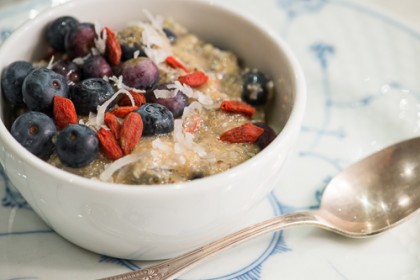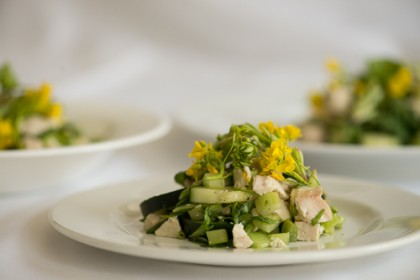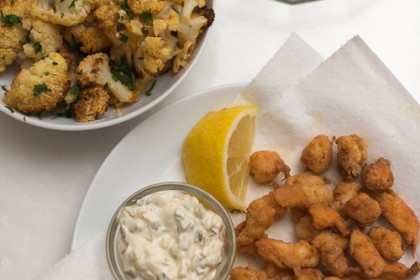Rice in arsenic is all over the news since Consumer Reports November 2012 article on “Arsenic in your food.”(1) The news is particularly disturbing news for the gluten free community because many people who are gluten free eat processed food that contains rice. The NIH found that arsenic in drinking water causes various cancers, it is linked to lung and bladder cancer (2) and can impact the long term health development of children.(3)(4) Consumer reports is recommending that you limit consumption of rice to 1/4 cup of rice per week for children and 1/2 cup of rice per week for adults. That recommendation is pretty difficult for families who are gluten free because so many gluten free products contain rice as an ingredient.
Here is an overview of the issue:
WHY IS THERE ARSENIC IN RICE?
IS ORGANIC RICE SAFER THAN CONVENTIONAL RICE?
One would think that organic rice would be a safer source than conventional rice, but according to the FDA’s Analysis of Arsenic in Rice and Rice Products: “The FDA is unaware of any data that shows a difference in the amount of arsenic found in organic rice vs. non-organic rice. Because arsenic is naturally found in the soil and water, it is absorbed by plants regardless of whether they are grown under conventional or organic farming practices.”(7)
IS ORGANIC BROWN RICE SAFER THAN CONVENTIONAL RICE?
Brown rice had twice the levels of white rice in tested samples
because the brown rice contains the outer layer of bran can contain
higher levels of arsenic. The lowest level or Arsenic was found in Lundberg California White Basmati rice–which
was the brand we have always used. The Lundberg California White
Basmati rice had 1.3 to 1.6 micrograms of arsenic per serving. The
Lundberg Short Grain Brown Rice had 3.8 to 5.4 micrograms of arsenic per
serving. This is a significant difference in the arsenic in the rice
and shows how the nutrient dense outer layer of the brown rice acts as a
skin to trap the arsenic. (1)
WHAT YOU CAN DO?
1) DON’T PANIC. Rice has always contained arsenic. It is just in the news now. It is alarming, but you can take steps to limit your consumption of arsenic and keep your family safe. Knowledge is power. You can choose the safest rice and send a message to manufacturers.
2) LIMIT HOW MUCH YOU SERVE RICE…
Given the rice scare I am not actually cooking much rice these days. This is because it is already is in so many gluten free products we eat, I don’t think they need extra rice. But, we didn’t eat that much rice before. For sure, I am not forbidding rice based on one report but I am minimizing it’s presence at meals. We eat more corn and potatoes and snacks made with these foods. That being said, we do have rice with Chinese food and the kids can have rice whenever they want. I am just not making it/serving it regularly.
3) ROTATE THE GRAINS YOU SERVE…
It’s hard to eliminate rice completely from a gluten free diet. But you can rotate the foods you eat to limit your consumption of rice. By rotating the starches and snacks you can really cut down on the rice intake. A simple way to cut down on rice is to rotate starches every few days. Here is a list of what a rotation might look like:
Mon (Rice) Tues (Corn) Wed (Potatoes) Thurs (Rice) Friday (Corn) Sat (Potatoes) Sun (Quinoa/Amarynth/alternative grains)
Using this rotation you can go from eating rice 7 days a week to 2 days a week! I chose this example because often it is easier and more
realistic to serve alternative grains on the weekend when there is more
time and kids aren’t bringing food to school.
Or you can make rice a once a week option. That would look like:
Mon (Corn) Tues (Potatoes) Wed (Quinoa) Thurs (Corn) Friday (Potatoes) Saturday (Quinoa) Sunday (rice! order chinese food!)
4) CHOOSE THE SAFER RICE. LOCATION MATTERS: Use rice that is grown in California, India and Thailand. These areas are farther from factory farms and cotton in the Southern United States which use arsenic. Gerber Foods has chosen to source their rice from California saying “California rice has the lowest naturally occurring arsenic levels for rice grown in the United States.”(8) Again, acccording to the report, the lowest level or Arsenic was found in Lundberg California White Basmati rice–which
was the brand we have always used.
(1) http://www.consumerreports.org/cro/magazine/2012/11/arsenic-in-your-food/index.htm#charthttp://www.consumerreports.org/cro/magazine/2012/11/arsenic-in-your-food/index.htm#chart
(2) http://abcnews.go.com/Health/arsenic-rice-report-finds-worrisome-levels/story?id=17267872#.UHR20Riyw-8http://abcnews.go.com/Health/arsenic-rice-report-finds-worrisome-levels/story?id=17267872#.UHR20Riyw-8
(3) http://www.ncbi.nlm.nih.gov/pmc/articles/PMC1519547/http://www.ncbi.nlm.nih.gov/pmc/articles/PMC1519547/
(4)http://www.dhs.wisconsin.gov/eh/chemfs/fs/arsenic.htmhttp://www.dhs.wisconsin.gov/eh/chemfs/fs/arsenic.htm
(5) http://health.usnews.com/health-news/blogs/eat-run/2012/09/28/arsenic-in-rice-of-baby-and-bath-water#commentshttp://health.usnews.com/health-news/blogs/eat-run/2012/09/28/arsenic-in-rice-of-baby-and-bath-water#comments
(6) http://www.nytimes.com/2012/04/05/opinion/kristof-arsenic-in-our-chicken.html
(7) http://www.fda.gov/Food/FoodSafety/FoodContaminantsAdulteration/Metals/ucm319948.htm
(8) http://articles.chicagotribune.com/2012-09-19/business/ct-nw-arsenic-rice-advice-20120920_1_rice-consumption-arsenic-levels-california-rice



